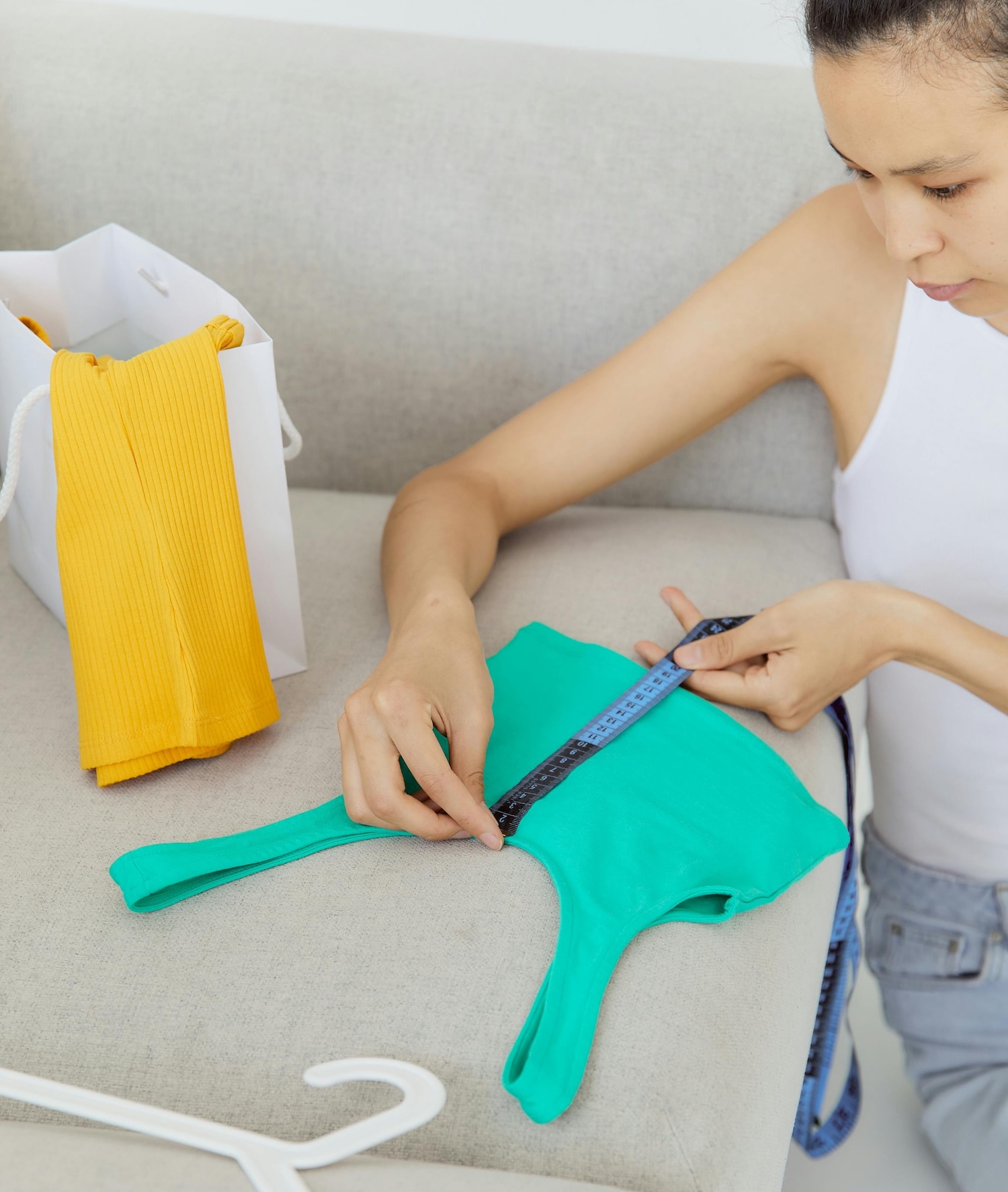
Mob wife mentality: Why do we dress the best when we feel the worst?
Is it “recession chic,” or do consumers have a way of using fashion as a distraction? Columnist Genevieve Smith peeks into our messy history of pulling the literal wool over our eyes
The catwalk would be a dark and bloody place if society consistently dressed to reflect current world events.
Three-piece suits made entirely of hair mats used to clean oil spills. Dainty chain necklaces spell “recession” in Gothic script. Fine leather boots are laced with bullet holes. A waterlogged peacoat with a tarp lining drips by, part of the Evicted Collection.
We don’t want to look at it; we don’t want to look like it.
A very small number of fashion houses have had the guts to launch collections shining light on social issues, especially those within their own industry. Last year, Swedish designer Beate Karlsson touched on the absurdity of fashion culture at AVAVAV’s show, ensuring each item of clothing from the collection fell apart as the model walked the runway. It was ironically well received.
Whether we like it or not, fashion is political. Fashion impacts society, as society impacts fashion. So it’s been hard to get dressed lately, and I’m not afraid to admit it.
This leads me to wonder, in a year of layoffs and political tension, is the rise of the “mob wife,” amid countless other trends, a direct response to the deeply unsettling truths that we just don’t have the stomach to address out loud?
Are we burying our heads in the proverbial fur? Why do we keep trying to look our best when we feel the worst?
History did it first
During the First World War, we saw petticoats and corsets tossed to the side, making room for looser silhouettes for women. We didn’t see fallen men on the battlefield, we saw their wives dressing to enter the workforce.
Mills started printing floral motifs on their flour sacks, though this was not a clever design choice. They merely hoped to improve the makeshift children’s clothing that families had resorted to producing in leaner post-war economic conditions.
Despite the numerous celebratory depictions of glamorous nightlife and shimmering flapper dresses, the 1920s were more realistically marked by what style historians often call “the democratization of fashion,” namely the introduction of simpler tailoring styles and a switch from ornate to everyday fabrics, such as jersey and artificial silks.
This move towards accessible patterns and pragmatic materials meant that the general public, struggling to make ends meet after global upheaval, could replicate department-store styles on their machines at home.
Time and again, we have proven that even when society suffers economically, we go to great lengths to maintain our image, our status. You can beat us down, but you can’t beat our outfits. Don’t let them see you struggle.
A full century has gone by, and with it, we’ve seen the rise and fall of the petticoat, the wave of the water bra, and the decline and renaissance of the velour tracksuit.
Jewellery has morphed from ornate to delicate and back again, while approachable opulence finds its place amongst modern maximalists. Our luxury is quiet, our jeans are baggy, our bags are tiny or enormous. Makeup trends range from hot beverages to fruit flavours.
We’ve managed to romanticize the “office siren,” which some could read as empowering, but personally brings to mind a lot of work that was done for years to avoid being sexualized in the workplace. Don’t ask me how I feel about coquette fashion unless you read Lolita and get familiar with the subculture (read: harmful).
Fashion has always been a symbol of status, but I fear it’s starting to feel like a symbol of delusion lately.
Trends > truth
I spend entirely too much time thinking about what I’m wearing. I have the luxury of having options, and I’m grateful, but the simple truth is that it helps me avoid thinking about anything serious.
If we’re all chasing the next trend, we won’t have time to think about the cost of living crisis. If we buy fur jackets and little sunglasses, we will somehow find a way past the sinking realization that we likely won’t own property in our lifetime.
If we pile up the rings on all our fingers, if we film the fit check, if we match the socks to the cap, we will be worthy of fair work opportunities. If we get a good blazer, and go to a good school, and wear the right shoes, we will end up with a good job that pays enough to afford groceries and rent.
Continued below
Find vintage and secondhand markets near you
View event calendar
Maybe things won’t feel so hard when I find the perfect pair of jeans. I caught myself thinking that a few days ago. It’s funny because I believed it while I thought it, but it’s way off base.
I don’t just want jeans that fit, I want to feel genuinely good about something obtained from this modern hellscape. The perfect pair of jeans exists outside of the realm of any store I could find, online or on this planet.
These jeans would have to pay off my credit card statement, maybe send me back to grad school, definitely end wars and obviously solve world hunger.
They would have to change the fact that over 40 per cent of recent renters, and four in five recent renters in poverty, lived in unaffordable housing, according to our most recent census.
They would have to explain how 76 per cent of the clothing returned to popular brands’ take-back programs were burned, dumped or shipped to other countries, according to the Changing Markets Foundation.
Honestly, these jeans would have to effect social change on a massive scale: introduce a better candidate for president, prime minister, and solve inflation. These jeans would have to create thousands of entry-level jobs for new graduates and open community gardens.
They would have to build affordable housing, change zoning laws, filter the air, and clean the lakes and rivers. These jeans have to be able to hold all brands and businesses accountable, disassemble systemic racism, and overturn the decision to take away a woman’s right to choose.
I’ve seen countless influencers claim to have found the perfect pair of jeans. The Amazon link is on my screen, but I know that cheap denim won’t won’t fix the problems within our current social landscape. It won’t stop people from pretending. I hold, above even denim, a fervent belief that pretending it’s not happening makes you complicit in it. Complacent.
Mobilizing mob mentality
Accepting harmful fashion practices is easy to do, but it is not a victimless act. A flour sack can be printed to look like flowers, but it scratches the skin all the same. Fashion provides escapism, and I don’t blame us for wanting to be anywhere but here.
But in the same way that fashion highlights our complacency, it can also demonstrate our resilience — silent signifiers of an ideal are woven into the hem of the pants we weren’t always allowed to wear. Dresses sewn from scraps are itchy, but we will have dresses, despite it all.
Envision the same approach to enforcing accountability in our industry. If the mob wives and final bosses of trend culture collectively decided to stop accepting harmful production practices, wage theft, pollution, inflation, textile waste and corporate greed?
If we used what we already have in tandem with the talent of those whose ideals we nurture? If we found what we needed was to make fewer and make them better? Even if that doesn’t make things any easier for brands?
Imagine how great those jeans would be.
Genevieve Smith is a fashion stylist, writer and founder of Gifts of Thrift. As a yard sale enthusiast, thrift store supporter, and die-hard environmental entrepreneur, she has spent the last two decades trying to figure out how to convince people it is, in fact, cooler to care. Her bimonthly column for The Vintage Seeker, ThreadFul, covers the intersection of thrifting, secondhand fashion, ethical style and sustainability.
Thank you for valuing our work!
Support our work to see this page.
You’ve got a good eye, but this gem is only available for members. Register for a plan or upgrade your current one to peek behind this vintage curtain, or log in below.















